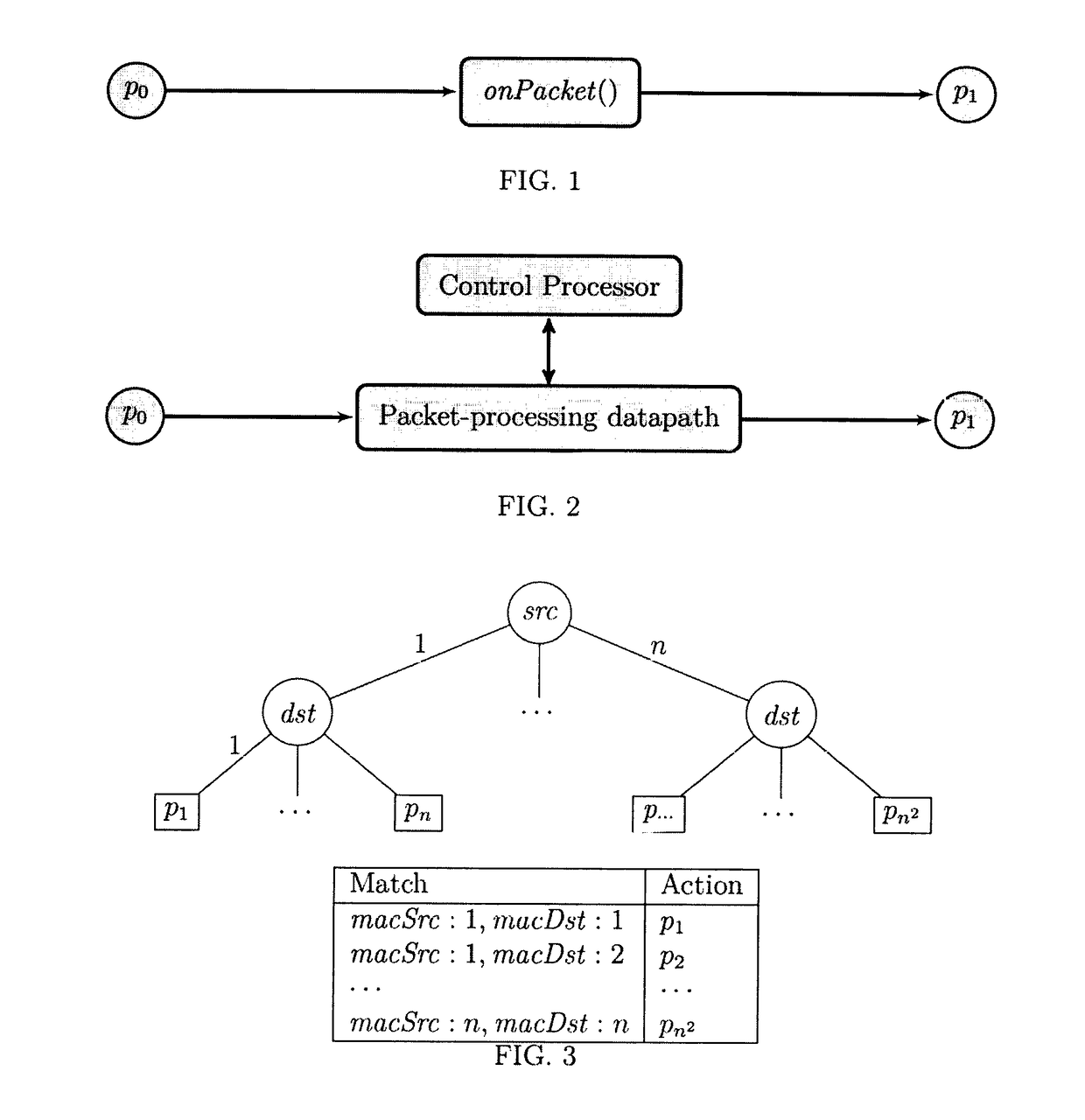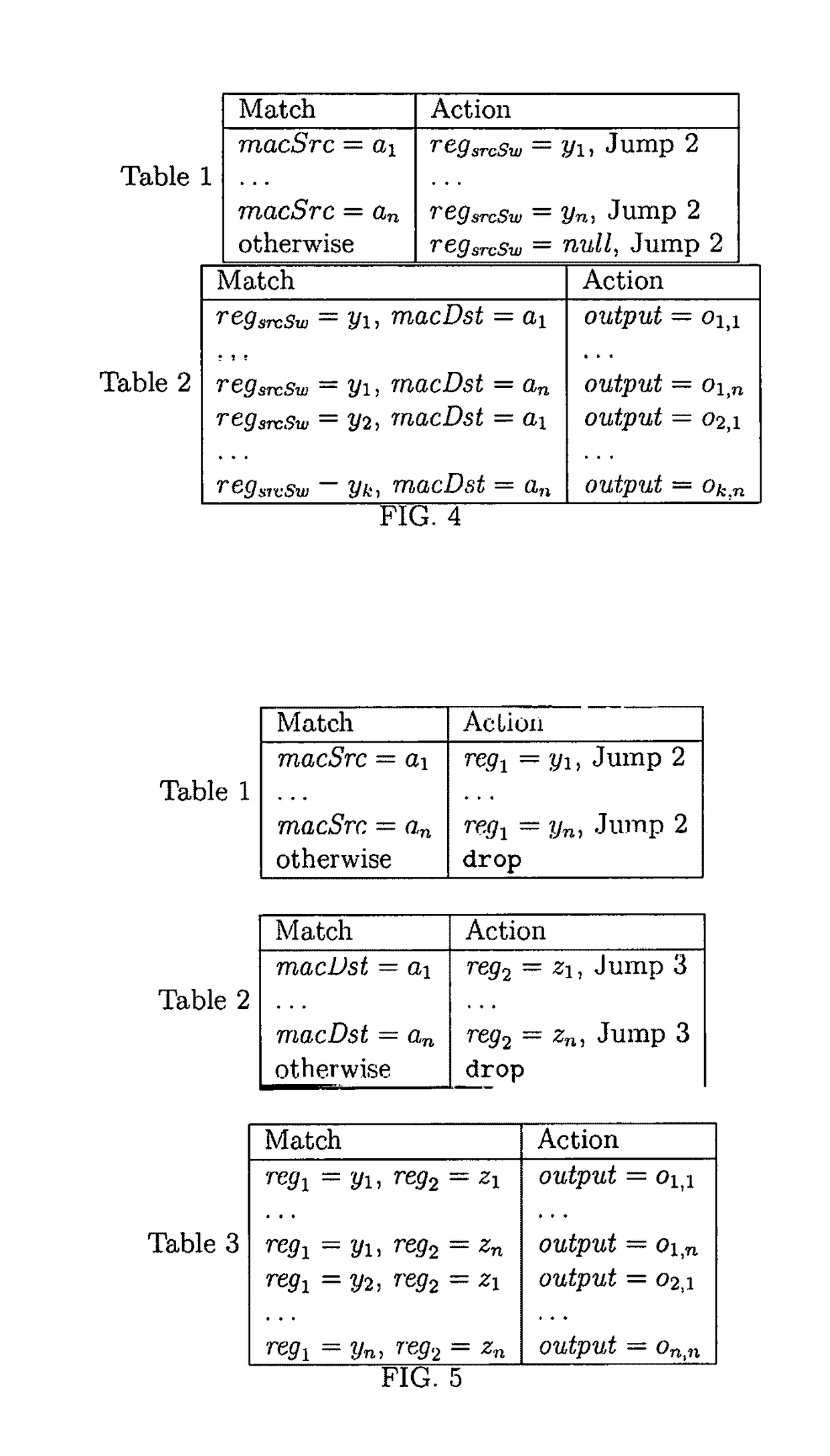Compilation and runtime methods for executing algorithmic packet processing programs on multi-table packet forwarding elements
a packet processing and multi-table technology, applied in the field of computer networking, can solve the problems of inability to implement packet-processing programs on datapath elements, datapath flow tables cannot update states, and the system state of a network can chang
- Summary
- Abstract
- Description
- Claims
- Application Information
AI Technical Summary
Benefits of technology
Problems solved by technology
Method used
Image
Examples
Embodiment Construction
[0069]Algorithmic Policy (AP):
[0070]Since different languages and different systems using the same language may impose different syntax to specify an AP, we do not give a formal specification of AP syntax. Instead, we use a pseudo-code style to specify APs in this disclosure. Different from low-level datapath computation models such as Openflow and P4, which typically allow only simple numerical types and limited computation flow control, a good language for APs should allow generic, compound data types (e.g., sets, hash maps) and complex computation flow control such as conditionals and loops.
[0071]In Magellan, the user writes a function that processes packets in a language with familiar, algorithmic features like variables, loops, and data structures. Conceptually, the user defines a function that is repeatedly executed on packets, taking packets in and producing some number of modified packets out, as shown in the block diagram of FIG. 1.
[0072]To illustrate, the following is an e...
PUM
 Login to View More
Login to View More Abstract
Description
Claims
Application Information
 Login to View More
Login to View More - R&D
- Intellectual Property
- Life Sciences
- Materials
- Tech Scout
- Unparalleled Data Quality
- Higher Quality Content
- 60% Fewer Hallucinations
Browse by: Latest US Patents, China's latest patents, Technical Efficacy Thesaurus, Application Domain, Technology Topic, Popular Technical Reports.
© 2025 PatSnap. All rights reserved.Legal|Privacy policy|Modern Slavery Act Transparency Statement|Sitemap|About US| Contact US: help@patsnap.com



